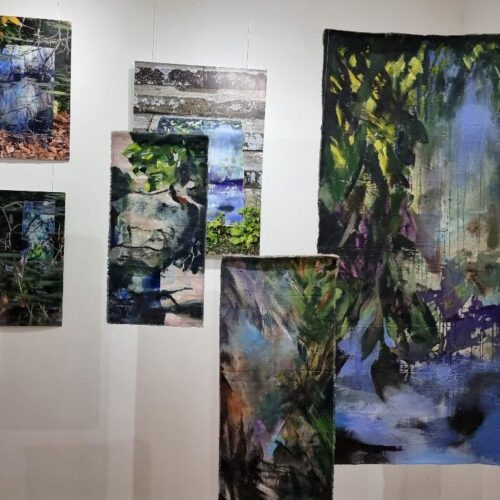
Kill your darlings
There are rich picking to be had for creative writers who spend time in museums. That’s what visitors to OCA tutor Liz Cashdan’s Memory and Memoir writing workshop discovered at Sheffield’s Off the Shelf Festival of Words last weekend.
Roaming the Victorian galleries of Weston Park in search of a starting point, the workshop participants (among them two OCA creative writing students) dug into the city’s archaeological, industrial and post-industrial past, jotting down notes and taking photographs on their smartphones as aide-mémoires. Then they returned to the sanctuary of a room at the top of the building, made a cup of tea and settled down to write.

Liz had suggested a number of approaches to selecting an object before the museum walk began. More emerged through discussion. Find an object that reminds you of something in your childhood – or a more recent period of your life. Find one that intrigues you. Find two objects that might talk to each other. A different line of attack is to see the museum as a site for people-watching. Is the museum a good place to be? What are people getting out of their visit, the grown-ups and the children?
Once you’ve found an object, you need a way into writing about it. For an object that reminds you of your own past, it may be as simple as describing it and the memories it evokes. An object that intrigues you could prompt you to write in the voice of the object, and ask yourself who made it, who owned it and how it found its way into the museum. Two objects might have a conversation with each other.
So which objects caught the workshop writers’ attention and how did they choose to write about them? Here are two examples. A 50,000 years-old mammoth tooth took the writer back to the 1960s, when she had worked in the city council’s engineering office and it was brought in by colleagues who had found it when widening a road. She wrote a poem that captured her emotions on seeing the mammoth tooth again for the first time in half a century. Another writer, the daughter of parents who advocated ‘Blue Peter’ and the non-commercial virtues of the BBC, drew her inspiration from a pair of glitter-covered platform shoes from the 1970s, writing wittily about the forbidden delights of ITV children’s show ‘Magpie’.
While it’s true that lone writers visiting a museum would be able to find an object (or two) and start writing, just as these workshop writers did, they would miss out on what is for many the most daunting aspect of writing in a group: reading your new work to an audience and listening to critiques. But it’s as valuable a part of the creative writing process as the note-taking, drafting and redrafting.
At Liz’s workshop, the novelist and critic Raymond Williams’ exhortation to favour the particular over the general prompted a reworking of the history of a shard of glass from one of the mullioned windows of Sheffield Manor Lodge. Ears not your own home in on the word that jars. Out it goes. At Weston Park, ‘pristine’ was cut from a poem about a neolithic flint axehead. Ditch the words to which, more often than not, you feel the strongest attachment. Kill your darlings – and carry on writing.
This list of museums in the UK will help you find museums near you. It includes links to each museum’s website.
The Off the Shelf Festival of Words in Sheffield continues until 29 October.
Image credit: OCA photography student Gayle Cosgrove






What a great idea, and how wonderful that it went so well. Museums are without doubt a mine of creativity for those with open eyes.